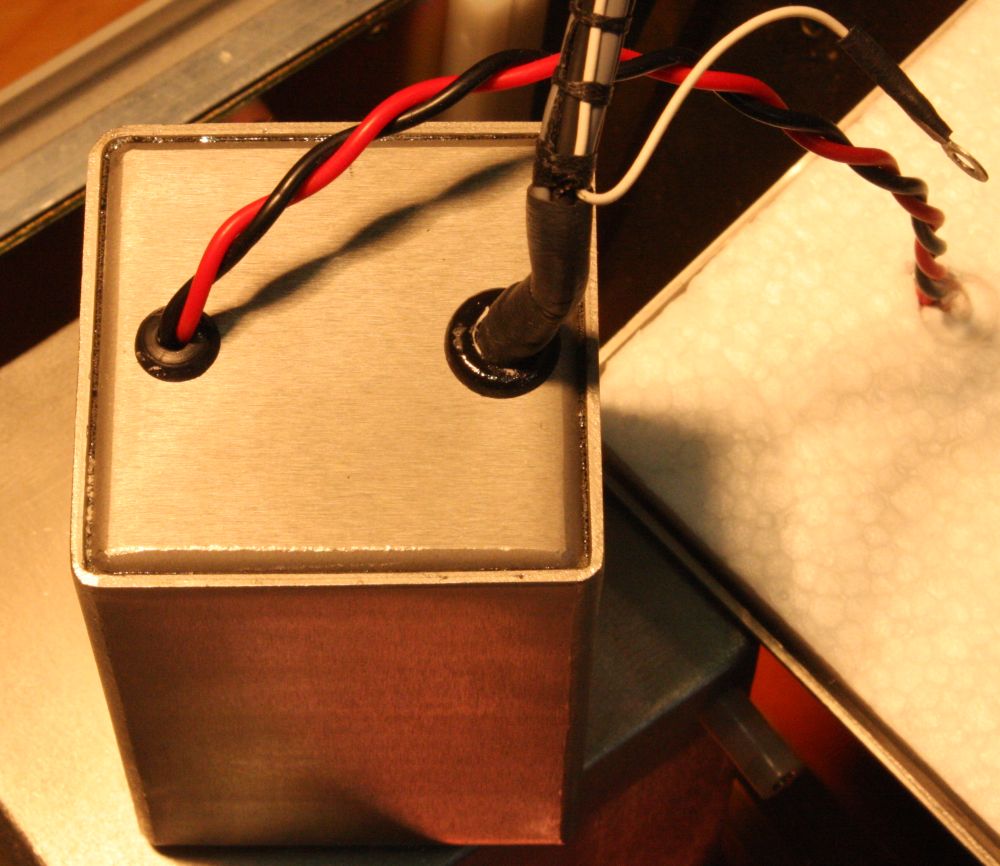Well, I really wanted to see the pre-amp, but as TiN says, it's not possible.
The lid of the innermost shielding box is held in only by some glue-like substance, a small bead of which can be seen around the join. Some of whatever it is has also been smeared on the rubber grommets, and it sticks well.

This small box holding the pre-amp is quite heavy, about the right weight for it being filled with something like potting compound. But I hadn't given up yet. What if the 'stuff' was something like hot melt glue, that could be softened at a safely low temperature to not harm the electronics and wiring?
So I shaved off some very small pieces of the compound from along the seam. Purpose: to see if they melted easily (hot melt), or singed like epoxy.

Gripping one of these little shavings in tweezers, first rough test was holding it close to a soldering iron. Nothing. Then actually against the iron (a Weller #7 tip, ie approx 700deg F.) Wow, still nothing. In fact if I scrunched up the piece, when heated like this it would pop back into shape.
Conclusion: the box is solidly potted with some heat-resistant silicone compound, that is quite resilient. So not possible to disassemble without destroying it. *Now* I give up.
I guess the purpose was to prevent surface leakage, and maximize internal temperature stability. Not to mention keeping the circuit hidden, and making it impossible to service.
A shot of the rear side of the main terminals. The terminals and wire are all copper (don't know what alloy.) No lug is used, only the wire clamped directly to the posts & washers. Then the whole join is coated with some silicone sealer, that bonds well with the silicone insulation on the wires.

The controls ALL have insulating shafts, so there is no electrical connection to the outer case shell.
Also below are shots of the front and back of the two PCBs. EM Electronics kindly sent me the schematics for these, but not for the input amplifier. The schematics are in docx format and seem to have been converted (with errors) from some schematic format, but are readable. Nothing on the input amp though. I guess that's their secret.
Overall, this instrument is extremely awkward to disassemble and reassemble. Not just because no connectors are used, with all wires directly soldered to PCBs. Mostly it's screw placements - some are extremely difficult to access.
Next: refurbishing the batteries. Hopefully I can pack the old battery cases with some of the 18650 LiIon cells I have, with minimal changes to the power supply board.